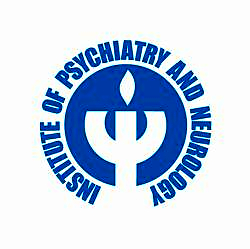1. Bazett HC. An analysis of the time-relations of electrocardiograms. Heart 1920; 7: 353-370.
2.
Beach SR, Celano CM, Noseworthy PA, Januzzi JL, Huffman JC. QTc prolongation, torsades de pointes, and psychotropic medications. Psychosomatics 2013; 54(1): 1-13.
3.
Beinart R, Zhang Y, Lima JA, Bluemke DA, Soliman EZ, Heckbert SR et al. The QT interval is associated with incident cardiovascular events: the MESA study. J Am Coll Cardiol 2014; 64(20): 2111-2119.
4.
Carvalho AF, Sharma MS, Brunoni AR, Vieta E, Fava GA. The Safety, Tolerability and Risks Associated with the Use of Newer Generation Antidepressant Drugs: A Critical Review of the Literature. Psychother and Psychosom 2016; 85(5): 270-288.
5.
Danielsson B, Collin J, Jonasdottir Bergman G, Borg N, Salmi P, Fastbom J. Antidepressants and antipsychotics classified with torsades de pointes arrhythmia risk and mortality in older adults - a Swedish nationwide study. Br J Clin Pharmacol 2016; 81(4): 773-783.
6.
Darpö B. Spectrum of drugs prolonging QT interval and the incidence of torsades de pointes. Eur Heart J Supplements 2001; 3 (Suppl K): K70-K80.
7.
Drew BJ, Ackerman MJ, Funk M, Gibler WB, P. Kligfield, V. Menon et al. Acute Cardiac Care Committee of the Council on Clinical Cardiology tCoCN, et al: Prevention of Torsade de Pointes in Hospital Settings: A Scientific Statement From the American Heart Association and the American College of Cardiology Foundation. Circulation 2010; 121(8): 1047-1060.
8.
Fanoe S, Kristensen D, Fink-Jensen A, Jensen HK, Toft E, Nielsen J et al. Risk of arrhythmia induced by psychotropic medications: a proposal for clinical management. Eur Heart J 2014; 35(20): 1306-1315.
9.
Flugelman MY, Pollack S, Hammerman H. Congenital prolongation of Q-T interval: a family study of three generations. Cardiology 1982; 69.
10.
Funk MC, Beach SR, Bostwick JR, Celano CM, Hasnain M, Pandurangi A et al. QTc Prolongation and Psychotropic Medications. Am J Psychiatry 2020; 177(3):273-274.
11.
Girardin F, Sztajzel J. Cardiac adverse reactions associated with psychotropic drugs. Dialogues Clin Neurosci 2007; 9(1): 92.
12.
Glassman A. Clinical management of cardiovascular risks during treatment with psychotropic drugs. J Clin Psychiatry 2002; 63 Suppl 9: 12-17.
13.
Goldenberg I, Moss AJ Zareba W. QT interval: how to measure it and what is “normal”. J Cardiovasc Electrophysiol 2006; 17(3): 333-336.
14.
Hasnain M, Vieweg WV. QTc interval prolongation and torsade de pointes associated with second-generation antipsychotics and antidepressants: a comprehensive review. CNS Drugs 2014; 28(10): 887-920.
15.
Kasper S. Choosing among second-generation antidepressant treatments for depressed patients with cardiac diseases. Int J Psychiatry Clin Pract 2019; 23(2): 134-148.
16.
Kosydar-Piechna M. Leki przeciwpsychotyczne a odstęp QT. Forum Med Rodz 2010; 4(3): 194-203.
17.
Malik M. Is there a physiologic QT/RR relationship? J Cardiovasc Electrophysiol 2002; 13(12): 1219-21.
18.
Nachimuthu S, Assar MD Schussler JM. Drug-induced QT interval prolongation: mechanisms and clinical management. Ther Adv Drug Saf 2012; 3(5): 241-253.
19.
Nielsen J, Graff C, Kanters JK. Assessing QT interval prolongation and its associated risks with antipsychotics. CNS Drugs 2011; 25(6): 473-70.
20.
Ojero-Senard A, Benevent J, Bondon-Guitton E, Durrieu G, Chebane L, Araujo M et al. A comparative study of QT prolongation with serotonin reuptake inhibitors. Psychopharmacology 2017; 234(20): 3075-3081.
21.
Pawlak JM, Twarowska-Hauser JW. Poradnictwo genetyczne i farmakogenetyczne w psychiatrii. Farmakoter Psychiat Neurol 2020; 36(3): 239-249.
22.
Pratt LA, Brody DJ Gu Q. Antidepressant Use Among Persons Aged 12 and Over: United States, 2011-2014. NCHS Data Brief 2017; 283: 1-8.
23.
Ray WA, Chung CP, Murray KT. Atypical antipsychotic drugs and the risk of sudden cardiac death. N Engl J Med 2009; 360(3): 225-235.
24.
Rochester MP, Kane AM, Linnebur SA, Fixen DR. Evaluating the risk of QTc prolongation associated with antidepressant use in older adults: a review of the evidence. Ther Adv Drug Saf 2018; 9(6): 297-308.
25.
Sarganas G, Garbe E, Klimpel A, Hering RC, Bronder E, Haverkamp W. Epidemiology of symptomatic drug-induced long QT syndrome and Torsade de Pointes in Germany. Europace 2014; 16(1): 101-108.
26.
Schwartz PJ, Woosley RL. Predicting the Unpredictable: Drug-Induced QT Prolongation and Torsades de Pointes. J Am Coll Cardiol 2016; 67(13): 1639-1650.
27.
Sicouri S, Antzelevitch C. Mechanisms Underlying the Actions of Antidepressant and Antipsychotic Drugs That Cause Sudden Cardiac Arrest. Arrhythm Electrophysiol Rev 2018; 7(3): 199-209.
28.
Stella F, Loureiro JC, Pais MV, Canineu PR Forlenza OV. Safety Limits of Antidepressant Use Plus Combinations: Focus on Cardiovascular Function. Curr Drug Metab 2018; 19(8): 641-652.
29.
Stöllberger C, Huber JO Finsterer J. Antipsychotic drugs and QT prolongation. Int Clin Psychopharmacol 2005; 20(5): 243-251.
30.
Straus SM, Kors A, De Bruin ML, van der Hooft CS, Hofman A, Heeringa J et al. Prolonged QTc interval and risk of sudden cardiac death in a population of older adults. J Am Coll Cardiol 2006; 47(2): 362-367.
31.
Taylor DM. Antipsychotics and QT prolongation. Acta Psychiatr Scand 2003; 107(2): 85-95.
32.
Tisdale JE. Drug-induced QT interval prolongation and torsades de pointes: Role of the pharmacist in risk assessment, prevention and management. Can Pharm J 2016; 149(3): 139- 152.
33.
Tisdale JE, Jaynes HA, Kingery JR, Mourad NA, Trujillo TN. Overholser BR et al. Development and validation of a risk score to predict QT interval prolongation in hospitalized patients. Circ Cardiovasc Qual Outcomes 2013; 6(4): 479-487.
34.
Trinkley KE, Page RL, Lien H, Yamanouye K, Tisdale JE. QT Interval Prolongation and the Risk of Torsades de Pointes: Essentials for Clinicians. Curr Med Res Opin 2013; 29(12): 1719-26.
35.
Viskin S. The QT interval: too long, too short or just right. Heart rhythm 2009; 6(5): 711-715.
36.
Viskin S, Justo D, Halkin A. Long QT syndrome caused by noncardiac drugs. Prog Cardiovasc Dis 2003; 45(5): 415-427.
37.
Welch R, Chue P. Antipsychotic agents and QT changes. J Psychiatry Neurosci 2000; 25(2): 154-160.
38.
Woosley RL, Black K, Heise CW Romero K. CredibleMeds. org: What does it offer? Trends Cardiovasc Med 2018; 28(2): 94-99.
39.
Zaręba W. Polekowe wydłużenie odstępu QT. Folia Cardiologica 2008; 3(2): 52-73.









